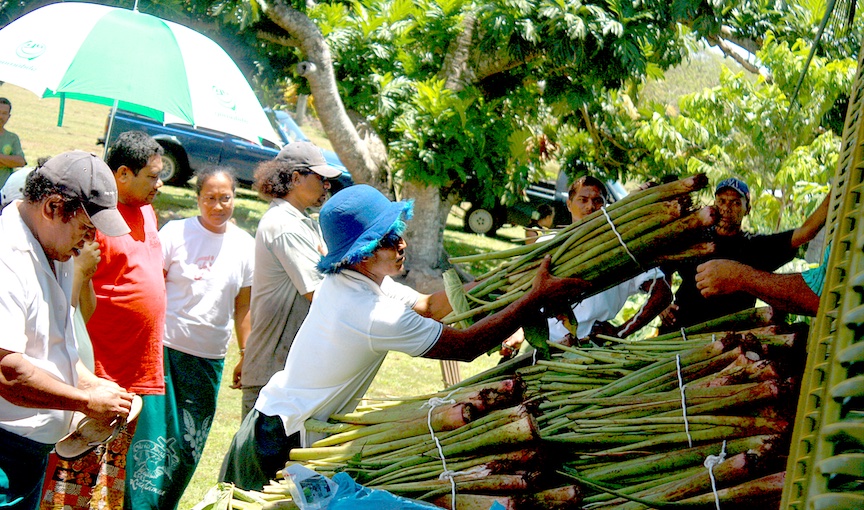
By Staff Writer
Samoa is ranked the Pacific Island country with the slowest economic recovery growth since the COVID pandemic took its toll on the global economy over the last 3 years.
Another critical economic set back is Samoa having the highest inflation rate in the region.
The World Bank made the analysis in a new report to update the state of Pacific economies and to look ahead to the recovery process speed for member states of the region.
The report found that border closures for the whole of the financial year 2022 and the first community COVID outbreak in March hampered tourism and in return affected Samoa’s economy with a contraction of 6 percent.
The analysis offered some relief that if conditions stabilise, Samoa is forecast to return to growth in 2023.
The setback though is the country faces the highest inflation in the region, forecast to reach 12 percent before easing by 2024.
While economic recovery in the region is expected to continue, fiscal balances, debt sustainability, and inflation will remain a concern.
Pacific nations will need to consider reforms and policies to boost equitable growth and sustainable investments, while striking a careful balance between supporting livelihoods and reducing future public debt risks.
While all Pacific countries are forecast to grow through 2023, some countries, such as Palau, will see larger rebounds of around 18 percent growth in GDP on the back of a resurgent tourism industry.
Others, such as Solomon Islands, are expected to grow more slowly with an increase of around 2.3 percent.
The new report comes at a critical juncture for Pacific Island countries. Closure of borders from 2020-22 during the pandemic have eased after dealing a severe blow to the tourism-dependent economies of Fiji, Vanuatu, Samoa, Tonga, and Palau.

However, the region is now being buffeted by inflation and global economic uncertainty.
In 2022, costs of shipping and imports rose to their highest levels in over 20 years. Although prices have eased modestly in recent months, the shocks are still being felt by the Pacific as global uncertainty has increased.
“After being severely hit by COVID-19, and tepid signs of recovery in 2022, economies across the Pacific can expect growth in 2023, but for many people it will not feel like a return to pre-COVD-19 times,” said the World Bank’s Lead Economist for the Pacific, David Gould.
“After three years of economic contraction in Fiji, for example, growth in 2022 is estimated to have climbed to 15 per cent, yet output is expected to remain below 2019 levels until 2024.”
The report notes that the high global economic fallout associated with the war on Ukraine led to a downward revision in growth forecasts for Pacific economies.
“Pacific Island countries have not been immune from the economic impacts of the war on Ukraine,” said David Gould.
“Just as the Pacific was set to begin its post-pandemic recovery, it has been dealt another shock. Rising global energy and food prices have strained Pacific budgets, added to inflation, and ultimately increased the cost of living for families across the region.”
The report projects that inflationary pressures will peak in the first half of2023, with consumer prices projected to fall in every Pacific Island country except Samoa, where inflation may reach as high as 12 per cent in the second half of the year, before falling in 2024.
The report provides an in-depth look at the challenges of fiscal and debt vulnerabilities faced by Pacific Island countries and how these were made worse during the pandemic. It offers several recommendations that Pacific governments could consider to accelerate their recovery, enhance debt and fiscal sustainability, and further improve living standards across the region.
“COVID-mitigation measures led Pacific governments to expand spending. To reduce the likelihood of falling into a problematic debt situation, Pacific governments should now consider ways to sensibly reduce costs, and begin to responsibly unwind pandemic-era support,” said Gould.
“After three difficult years, the Pacific’s economic prospects are clearly improving. While challenges remain, the Pacific is well placed to accelerate its post-COVID economic recovery throughout 2023 and beyond,” said Stephen Ndegwa, World Bank Country Director for Papua New Guinea and the Pacific.
The World Bank works in partnership with 12 countries across the Pacific, supporting more than 95 projects totalling US$3 billion in commitments in sectors including agriculture, aviation and transport, climate resilience and adaptation, economic policy, education and employment, energy, fisheries, health, macroeconomic management, rural development, telecommunications, and tourism.